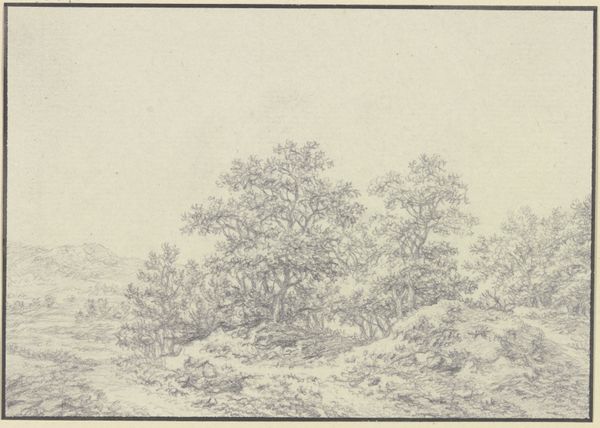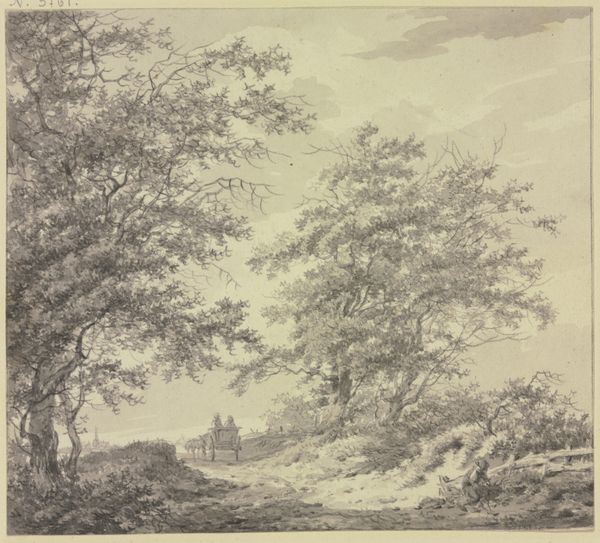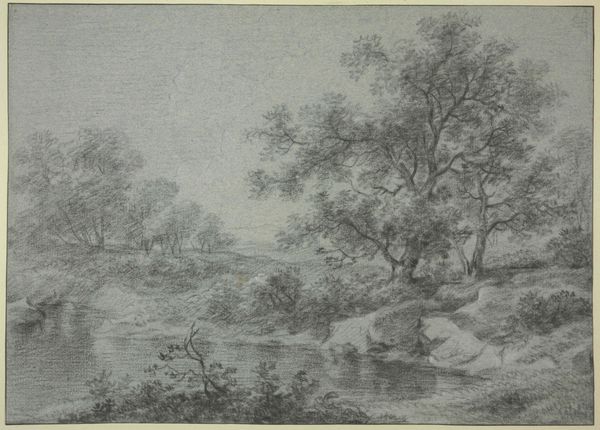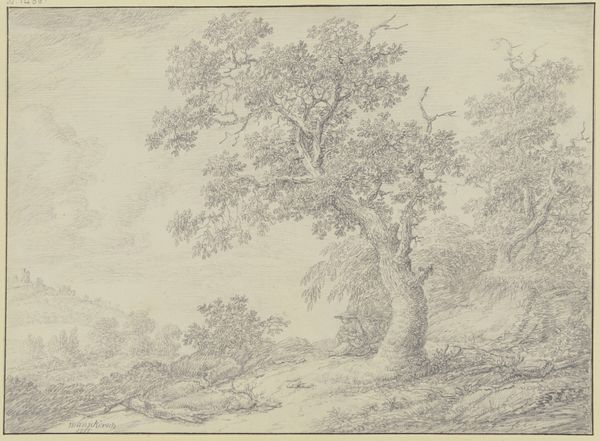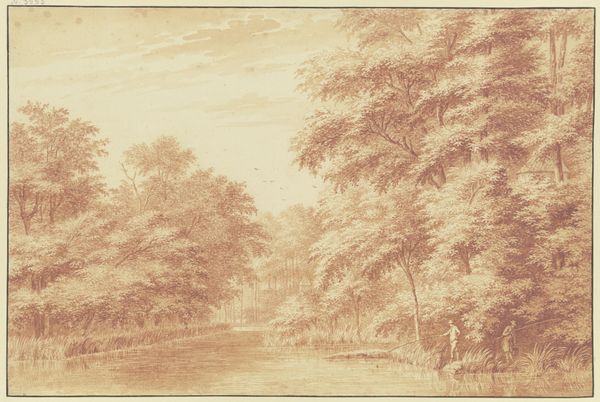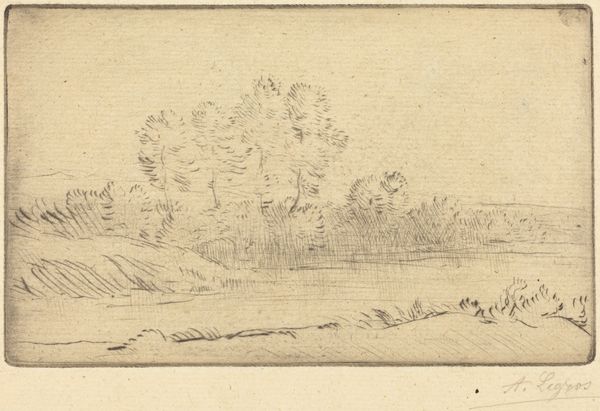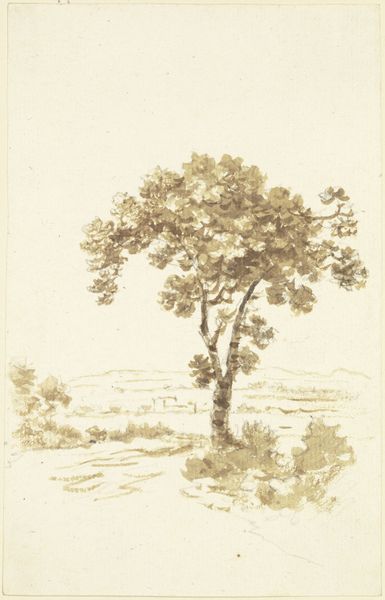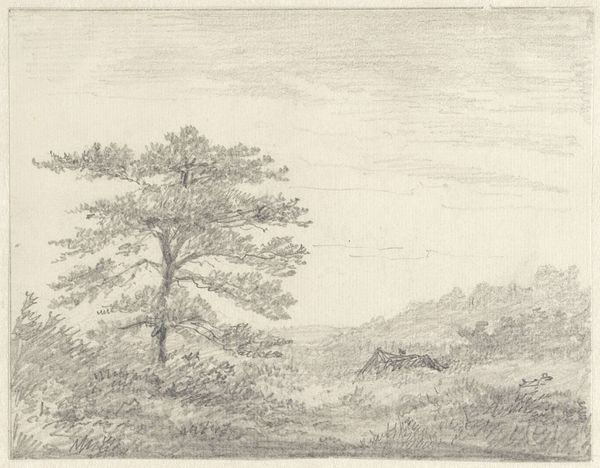
Baumpartie auf steinigem Gelände, im Vordergrund ein Mann und ein Kind
0:00
0:00
drawing, paper, graphite
#
drawing
#
landscape
#
paper
#
classicism
#
graphite
Copyright: Public Domain
Editor: This graphite drawing by Karl Franz Kraul, titled "Baumpartie auf steinigem Gel\u00e4nde, im Vordergrund ein Mann und ein Kind," which translates to "Trees on rocky ground, in the foreground a man and a child," has such a calm, quiet feel to it. The landscape fills the composition, and I’m immediately drawn to the delicate rendering of the trees. What historical context should we consider when looking at this piece? Curator: Well, given the classical style and focus on the natural world, it's useful to consider the social context in which it was created. During the rise of classicism, there was a corresponding desire amongst members of the middle-class to express freedom from the monarchy. This often included emphasis on ideals such as reason, order, and idealized nature. Does this artwork reflect these social and cultural ideals? Editor: It certainly seems so. There’s an ordered sensibility in the depiction of the trees and figures. The figures in the landscape seem to represent an engagement with the natural world outside of social constructs. Were drawings like this publicly exhibited at the time? Curator: Often these works weren't necessarily intended for grand exhibition spaces. Many such landscape drawings and studies were, in fact, part of a growing culture of amateur art-making and collecting among the middle class. It represents a certain kind of cultivated taste, doesn’t it? One meant to signal a personal connection to idealized nature and the ancient past, particularly outside the rigid conventions of, say, the Royal Academy or other state-sponsored venues for the elite. Editor: That makes a lot of sense! The work does feel intimate. It seems almost like a personal reflection rather than a grand statement, in many ways speaking to a shift in cultural and social perspectives and power dynamics at the time. Curator: Precisely. It offers insight into how cultural values shaped the artistic expression and consumption within the rising middle class.
Comments
No comments
Be the first to comment and join the conversation on the ultimate creative platform.
